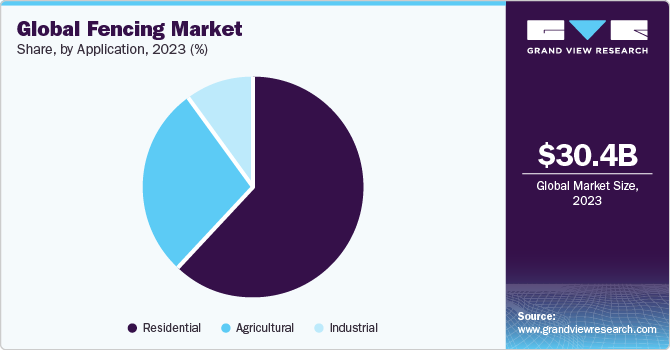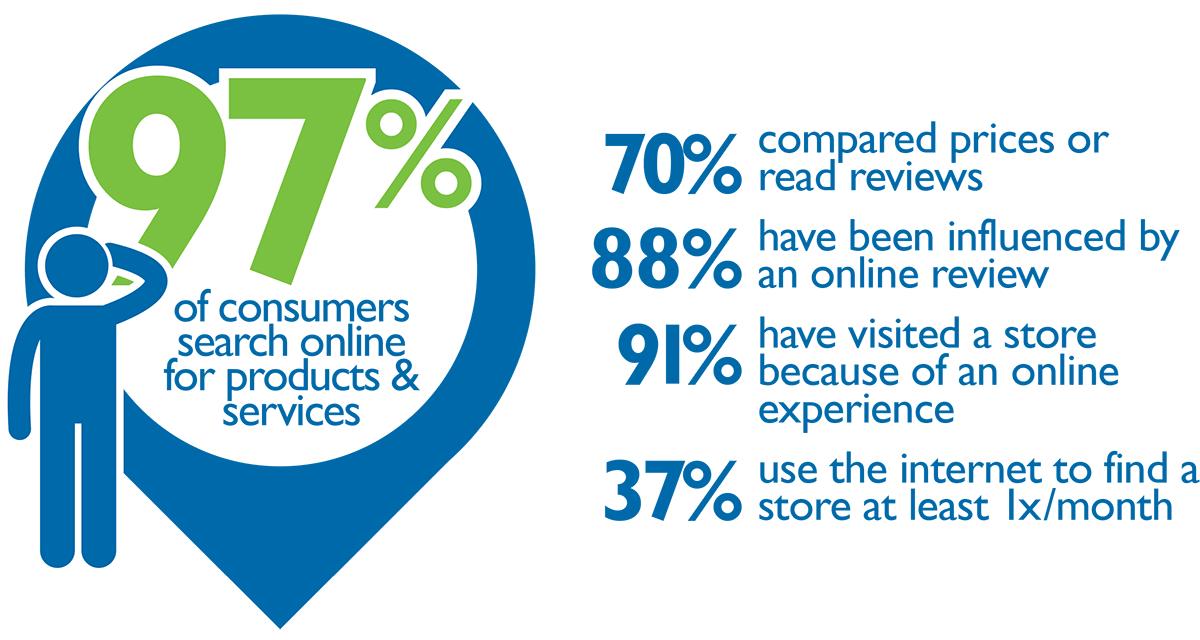The U.S. fencing industry is estimated to grow at a compound annual growth rate (CAGR) of 5% from 2022 to 2030. With steady growth, starting a fencing installation and contracting business can be lucrative for new entrepreneurs or established contractors looking to expand their services.

Identifying ideal locations, understanding permitting and licensing requirements, investing in equipment, hiring and training staff, implementing a marketing plan, and developing processes for efficient operations are key steps to launching a successful fencing company.
This guide will walk you through everything you need to know how to start a fencing company. Topics include registering an EIN, obtaining business insurance, marketing your fencing business, and more.
1. Conduct Fencing Company Market Research
Market research is essential to starting a new fence installation company. It provides insight into your target market, where to source the best fencing materials, trends in fencing services, and competing fence company brands in your area.

Some details you might learn through market research while developing a business plan for your fence installation business include:
- Target customers include residential homeowners, multi-family properties, and commercial businesses needing new fencing or upgrades.
- Homeowners generate over 50% of total industry revenue as they invest in fences for privacy, security, pools, and outdoor living spaces.
- Rental properties and commercial sites are also significant markets as they require sturdy, permanent fencing.
- Given constant property growth in regions nationwide, ample fencing needs exist.
- Businesses able to offer quality fences affordably and efficiently are well-poised for success.
- Major barriers to entry requiring capital investment include equipment, storage, employee wages, insurance, and finding skilled welders if you also plan on offering welding services.
- Many local and regional operators thrive with less than $500K annual revenue.
- A fencing company must develop abilities to: accurately estimate projects and control costs; manage reliable installation crews; source quality, affordable materials; and build a strong brand reputation for good customer service.
- Companies able to do this can expect to grow 15-20% annually for the first 1-3 years.
- Based on a 25% net margin, profitability potential is roughly $125K on $500K revenue.
- Experienced operators with multiple crews in growing regions can reach $5-10 million in annual revenue within 5-10 years.
A locally-based fencing contractor has tremendous opportunity given substantial ongoing market needs combined with relatively low barriers to launch for those skilled in vital business functions. Companies delivering quality fences promptly, at reasonable prices, and with excellent service will likely see high growth and profitability.
2. Analyze the Competition
New fencing companies must carefully assess both brick-and-mortar and online competitors. Understanding the local competition helps you develop pricing guides, and competitive marketing strategies, and select the right services for your clients.

Some of the ways to get to know local competitors include:
- Research all incumbent fencing companies within the planned service area.
- Look for information on websites, but also check social media platforms, review sites such as Yelp, and local directories for additional fencing company names and contact information.
- Note pricing models and service offerings such as fence installation, repair, and material sales.
- Evaluate digital prowess from a prospective customer’s viewpoint.
- Search popular terms consumers would use to find fencing solutions.
- See what players rank the highest and why, such as consistent local search visibility, positive reviews, or informative content from blogs and websites.
- Ensure new fencing company websites offer a quality user experience and useful content to compete for potential customer attention and clicks.
- Build the same review profile and broad consistent local search presence as leaders to capture leads, whether for high-ticket installation projects or simple fence repairs.
- Chart out the local competitive landscape—who offers what fencing solutions and where.
- The strategic location and ideal service mix that addresses any whitespace can be the difference between startup struggle and accelerated growth.
In the end, there is room for many fencing providers even within certain regions. Those able to differentiate by digital footprint and in-person service quality will be best positioned for success as they enter the market.
3. Costs to Start a Fencing Company Business
Significant upfront investment is required for equipment, workspace, licensing, insurance, and staffing to run a fence installation business properly. Realistic costs across all key items at launch can total $50,000-$150,000 or more.
Start-up Costs
Purchasing fencing supplies and equipment such as trucks, trailers, tools, and machinery represents one of the largest start-up investments.
- For one crew, plan $35,000-$50,000 to acquire used vehicles in good condition as well as key tools like post-hole diggers, power augers, nail guns, compressors, and table saws.
- Ongoing maintenance and gas will run $300-$500 monthly per vehicle.
- Leased warehouse space for secure parking, equipment storage, and workspace will likely run $2,000-$4,000 monthly.
- Minimal office furnishings and supplies specifically for the fencing company may cost $3,000-$5,000 at launch.
- Administrative fees include incorporation filing and licenses/permits applicable to the region, typically totaling under $1,000.
- Specialized fencing contractor insurance including liability coverage can cost $3,000-$5,000 annually.
- Staffing one installation crew requires at least 2-3 skilled workers with estimated wages of $22-$28/hour plus payroll taxes and workers’ compensation insurance.
- Operating cash flow padding of at least $15,000-$20,000 helps cover initial materials purchases, rent, and wages until starting revenues build.
In total, fencing companies should budget $50,000-$75,000 to launch a single installation crew, with the high end covering premium warehouse space, top equipment, and robust payroll for multiple staff members. Those seeking to scale more aggressively may invest over $100,000 at the start.
Ongoing Costs
Once up and running, operators can expect monthly fixed costs of around $13,000-$18,000 encompassing equipment maintenance, facility lease, insurance, admin fees, and base personnel wages.
Variable expenses per project include materials, production labor, permits, and sales commissions scaling directly in proportion to revenue. Fence materials and subcontracted installers comprise the highest ongoing variable costs. Profitability relies on pricing and production efficiency.
In summary, while fencing requires significant capital to start, for those committed to building a premium brand reputation around quality and service, the long-term rewards can also be substantial.
4. Form a Legal Business Entity
When starting a fencing installation and services business, the legal structure impacts everything from day-to-day operations to taxes and liability exposure. Evaluating the pros and cons of each framework ensures the best fit now with flexibility for future growth.
Sole Proprietorship
A sole proprietorship provides the easiest and least expensive option to get up and running quickly. There is little paperwork since the individual business owner reports all profits and losses on Schedule C of their tax return. The owner assumes unlimited liability for debts and legal claims arising from the business.
General Partnership
Forming a general partnership spreads liability risk across partners, yet partners remain jointly responsible for each other’s business actions and debts. All partners share control and profits evenly regardless of capital contributions or work levels. These limitations make partnerships better suited for professional services firms versus capital-intensive contracting businesses.
Limited Liability Company (LLC)
Many fencing company owners opt to form a limited liability company (LLC). This separates personal assets from business liabilities while avoiding double taxation of income. Startup and compliance costs are low with pass-through tax treatment. Owners have flexibility in structuring manager and partner roles, voting rights, and profit distributions.
Corporation
A corporation also limits owners’ liability, but formation and operation involve extensive recordkeeping plus corporate income taxes. Share distribution provides funding and transferability options, although issuing stock adds administrative complexity. Unless pursuing external investment or acquisitions, most small fencing businesses rarely benefit enough from incorporating to outweigh extra costs.
5. Register Your Business For Taxes
Before hiring employees or accepting payments, every fencing company must obtain an Employer Identification Number (EIN) from the IRS. This unique nine-digit number identifies the business for tax administration purposes similar to how Social Security Numbers identify individuals.
Specifically, EINs allow businesses to open company bank accounts, apply for licenses and permits, file tax returns for company revenue/expenses, and hire employees. The IRS uses the EIN to track tax liabilities.
Applying for an EIN is quick, free, and can be completed online via the IRS website. The online EIN assistant will guide question-by-question through information about the company structure, owners/officers, and business activities. This self-service portal allows sole proprietors, LLCs, partnerships, and corporations to get an EIN instantly without needing to mail forms or speak with representatives.
In the end, the EIN is provided to use right away for company needs. This should be tracked closely as the key business identification number for all owners and authorized personnel. It is also helpful to keep a printout of the final EIN confirmation notice.
In addition to the federal EIN, fencing contractors must also complete state-level business licensing to collect sales tax on projects and comply with local contractor rules. Though specifics vary by state, construction, contractor, and sales tax licenses are essential to legally provide fencing services. Both state and county municipal offices can advise on requirements.
Taking these steps early when establishing a fencing company ensures full compliance, proper tax remittance, hassle-free payment processing, and bid eligibility for public projects. The EIN and related licenses/registrations provide the necessary credentials to operate smoothly. Reach out with any other questions on how to get a new fencing business fully approved.
6. Setup Your Accounting
Proper financial tracking and controls are vital for fencing contractors to maximize profits and minimize tax liability. Investing in tools and partnerships for accurate accounting saves substantial time and money over the long run.
Accounting Software
The top priority is utilizing dedicated small business accounting software like QuickBooks to automatically import, categorize, and reconcile everyday transactions from connected business bank/credit card accounts. This provides up-to-date visibility into cash flow, which is key for making informed decisions on pricing jobs and managing payroll.
Hire an Accountant
While the software does the heavy lifting automatically, partnering with an accountant provides an expert resource to ensure full compliance and optimal tax strategy. A qualified accountant offers services like:
- Monthly reconciliation of accounts
- Bookkeeping cleanup to fix errors
- Sales tax guidance
- Corporate structure and payroll advice
- Tax preparation services
Expect to invest $200-$400 monthly for typical bookkeeping needs, and up to $2,000 annually for personal/business tax form preparation. This fee is well worth it though for an experienced second set of eyes, especially if ever audited.
Open a Business Bank Account
On the banking side, establish dedicated small business checking/savings accounts separate from any personal finances, even if operating as a sole proprietorship initially. This simplifies tracking deposits and expenses that flow through the business. As revenue grows, specialized commercial banking services become available too.
Apply for a Business Credit Card
A separate business credit card should also be used for all fencing purchase transactions. This streamlines importing card charges into QuickBooks for easy categorization. Plus, keeping expenses segregated aids in monitoring business profitability month-to-month. Approval for a business card utilizes the company’s financial data instead of the owner’s credit score, enabling higher limits.
7. Obtain Licenses and Permits
Starting a fencing installation and services company requires proper licensing to legally operate, win commercial bids, and offer services that meet regional building codes and safety standards. Find federal license information through the U.S. Small Business Administration. The SBA also offers a local search tool for state and city requirements.
The foremost construction permit certifies competency to oversee projects that alter property structures and boundaries. Fencing requires specialized knowledge of zoning allowances for height and proximity to property lines, compatibility with underground utilities, gate safety mechanisms, and more.
Crews must execute flawless workmanship that passes inspections by local building authorities. Therefore, a contracting license demonstrates prerequisite capabilities to take on fence projects across residential, commercial, and municipal customers.
Applications for a contractor’s license always require some combination of experience, exam performance, insurance coverage, and bonding to validate technical expertise plus business stability. Fees range widely based on location and license type from a few hundred dollars to the thousands. Renewals may be annual or every few years.
Municipal jurisdictions and homeowners associations may stipulate additional permits needing approval before installing certain fence styles, materials, layouts, or features like electric gates. Not securing these prior approvals risks violation notices, fees, and rework costs.
Many regions require trade-specific registrations for fencing work such as electrical licensing for automated gates or security systems. Proper credentials verify crews have been vetted to supply and install specialized equipment safely and to code. This avoids liabilities and expensive repairs.
8. Get Business Insurance
Insuring a fencing installation company is mandatory to bid jobs, protect the owners from financial ruin, and operate legally. The right insurance safeguards the business from unpredictable liabilities arising from property damage, worker injuries, natural disasters, and even cybercrime.
Without adequate coverage, a few hypothetical scenarios could quickly put a contractor out of business:
A falling fence beam crushes a customer’s rare luxury vehicle, generating a $100,000 repair bill. An elderly resident trips over tools left at a job site, breaking a hip that requires $250,000 in medical expenses. A data breach exposes thousands of client credit cards, demanding regulatory fines and legal fees.
In each case, the right business insurance policies would cover the losses. But lacking protection means the company bears full responsibility – enough to bankrupt most small operators.
Comprehensive contractor insurance packages generally include:
- General liability – protects against third-party injury and property damage claims
- Vehicle/equipment policies – cover theft plus damage repairs
- Worker’s compensation – helps injured employees with medical and partial wage expenses
- Data breach – assists with regulatory fines and legal services after a cyber attack
The first step is to compare quotes online based on your location, services, and revenue. An independent broker can then evaluate coverage options across multiple insurers to identify the optimal bundle for your risk profile and budget. Expect total premiums of around 5% of annual gross receipts to secure adequate protection.
9. Create an Office Space
An office or dedicated workspace serves several key functions for fencing contractors beyond basic administrative tasks. Having a professional home base to meet with prospective clients, store tools securely, and assemble project plans allows companies to deliver premium, reliable services.
Home Office
Utilizing an area of a home residence to launch operations requires no extra rent costs. Video meetings prevent an unpolished environment from deterring sales. However, storing equipment securely often proves challenging for residential properties unless the owner has acreage. Crews also lack an official rallying point each morning before dispersing to job sites.
Coworking Office
Coworking spaces like WeWork offer convenient month-to-month small offices, conference rooms, and open desk rentals. The collaborative community facilitates networking while amenities like mail handling, snacks, printing, and WiFi simplify logistics. However, construction tools cannot be stored long-term. Expect to invest $300-$800 monthly for desk rentals and meeting credits.
Commercial Office
Standalone commercial property rentals provide the most flexibility to customize the workspace. Warehouse spaces allow indoor parking for machinery plus yard access for materials deliveries and equipment maintenance. Crew members also take pride in rallying at an official company facility each workday. Estimated monthly costs typically range from $2,000-$4,000.
10. Source Your Equipment
Launching a fencing contracting company requires a sizable upfront investment in reliable trucks, heavy machinery, hand tools, and other specialized gear to handle everything from demolishing old fences to installing new posts and gates. Strategic decisions around buying, leasing, or renting equipment have major cost and flexibility implications.
Buy New
Purchasing key machinery like skid steers, augers, and bobcats provides dependable performance under manufacturer warranty but carries premium prices ranging from $ 25,000 to $75,000 per unit.
Buy Used
Shopping deals on used equipment sites like Machinery Trader and Commercial Truck Trader can yield 25-50% savings on lightly used versions of the same pro-grade tools. Delivery fees still apply.
Rent
Short-term equipment needs for niche projects can warrant renting select machinery for just $500-$2,000 weekly based on market rates. Rental yards offer the latest models without long-term liability. Just ensure availability and reserve well in advance during peak seasons.
Lease
Leasing agreements provide another flexible alternative, allowing crews to operate newer machinery in exchange for 12-36 months of payments structured as a percentage of the market value. Ownership transfers upon completion of all payments. This avoids large lump-sum cash outlays.
11. Establish Your Brand Assets
Crafting a distinctive brand identity helps fencing businesses make memorable first impressions, reinforce capabilities, and embed trust to compel sales. Investing in visual assets, contact tools, and digital properties transforms basic services into a professional brand that attracts ideal customers.

Central components for branding require upfront planning and investment, but collectively form one cohesive market image:
Get a Business Phone Number
A custom business phone line from RingCentral with a local area code ensures calls are fielded professionally. Features like call forwarding provide flexibility when moving between the office, job sites, and home. Expect basic service starting at around $30 monthly.
Design a Logo
Creating an eye-catching company logo with Looka’s DIY logo builder helps reinforce branding affordably. Incorporating familiar fencing imagery, strategic colors, and an easily readable style makes a connection with customers. Logo design starts at $20.
Print Business Cards
Quality yard signs, vehicle branding, and work apparel with a consistent logo help reinforce awareness plus project professionalism on estimates or while completing fence jobs. Custom Vistaprint signage and shirts cost around $100.
Get a Domain Name
Check out Namecheap for affordable domain names showcasing your brand and services. Think of something like AllFencedIn [dot] com or similar. Plan your social media tags to match so customers can find you easily.
Design a Website
Having an easily navigated website is critical for a successful fence company. Expect to invest $100 to $500 building with tools like Wix, or hire a Fiverr freelancer if lacking time or web skills.
12. Join Associations and Groups
Tapping into networking, training programs, mentoring circles, and industry affiliations builds skills, connections, and credibility for fencing contractors aiming to prosper. Belonging to the right professional communities unlocks insider expertise plus lead generation opportunities.
Local Associations
Several associations like the American Fence Association and National Association of Landscape Professionals offer national conferences, regional meetups, and online forums to exchange insights about the latest tools, safety protocols, regulations, and best practices amongst industry peers and vendors. Membership fees vary based on corporate partnerships, with most individual pro pricing under $500 annually.
Local Meetups
Local builder associations host regular meetups, job fairs, and showcases for fencing providers to interface with developers and general contractors. Even small municipalities organize events for securing municipal contracts. Check out Meetup to find a fence installation event in your area.
Facebook Groups
For informal networking and real-talk join free Facebook Groups. Groups like Fence Company Managers & Owners – USA and Fence Installers of the United States provide sounding boards to thousands of operators nationwide. Daily conversations hit on securing permits, training installers, buying deals on materials, managing payroll, and more.
13. How to Market a Fencing Company Business
Implementing multipronged marketing exposes a new fencing operation to the highest number of prospective residential, commercial, and municipal customers. Combining digital promotion and community networking captures attention from all target demographics while reinforcing the brand’s capabilities and professionalism.
Referral Marketing
Most importantly, deliver premium service and products on every job. Nothing markets better than word-of-mouth referrals from satisfied homeowners sharing their positive experiences across neighborhood communities. Offering loyal customers a $100 referral bonus or gift card incentivizes direct recommendations to friends seeking fencing solutions.
Digital Marketing
Digital platforms provide the most cost-efficient marketing opportunities to broadcast the brand continuously across the region. Consider:
- Google Ads targeting local searchers of fencing installation, repairs, or materials
- Facebook and Instagram ads focused on homeowners within a 20-mile radius
- Short YouTube videos showcasing flawless fence projects
- Informative blogs on types of fences, costs, laws, maintenance tips
- Positive customer reviews on Google Business Profile, Facebook, Yelp
Traditional Marketing
Traditional outlets still warrant limited investment to reach homeowners less active online. Examples include:
- Direct mailers showcasing services to specific neighborhoods
- Chamber of Commerce sponsorship and event booths
- Table/banner displays at local home shows and industry expos
- Sponsoring a Little League team or community fundraiser
- Small radio/podcast ad buys on local DIY home improvement shows
The most effective marketing acknowledges local buyers are evaluating multiple bids for fencing work based on variables of quality, pricing, expertise, and trust in the provider. Position the company as the premier option by highlighting credentials, customer reviews, and concise messaging across all platforms.
14. Focus on the Customer
Providing an amazing customer service experience ultimately wins the most lucrative fencing contracts and perpetuates referral business from satisfied homeowners. Each client interaction either reinforces or erodes trust in the company’s commitment to quality workmanship performed respectfully and on schedule.
From the initial quote through project completion, crews should clean up job sites promptly. Be courteous in communicating any delays due to weather or materials shipments. Seek advance approvals for modifications and send progress photos mid-project for transparency.
Listen attentively to all concerns without defensiveness. Rather than blaming customers for misunderstandings, clarify how to prevent issues from repeating in the future. Preventing even a single negative review nurtures reputation and secures repeat/referral opportunities.
Following fence installation, ensure clients understand proper gate operation and can access warranty terms easily if repairs ever become necessary. Consider a feedback survey to monitor quality control. Recognition programs further motivate crews to maintain consistency.
Finally, share testimonials and project pictures on websites/social channels (with permission). Satisfied homeowners and business owners promoting first-hand positive encounters with the fencing company serve as the best possible marketing to attract other customers evaluating options when commissioning projects.
